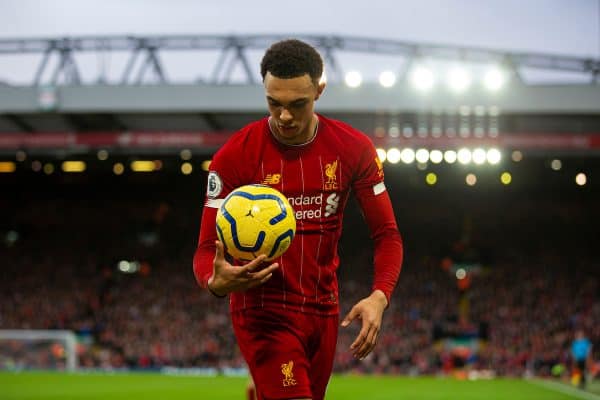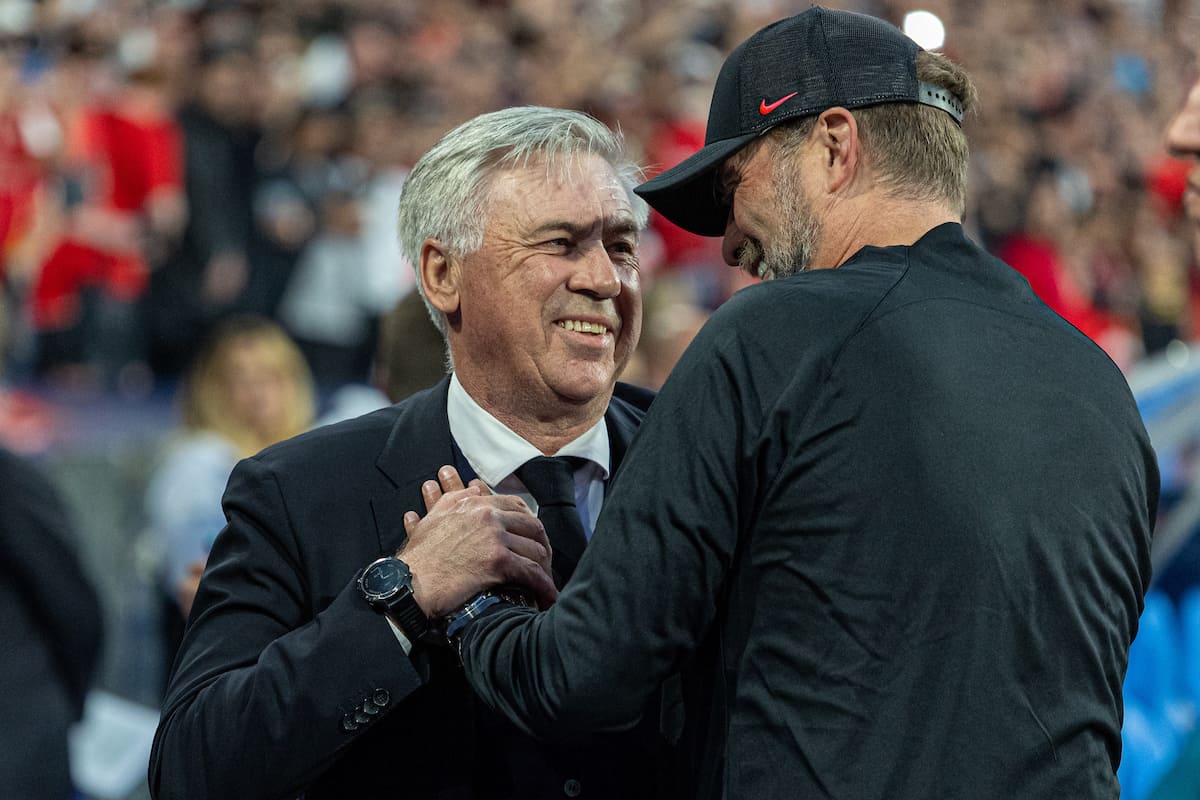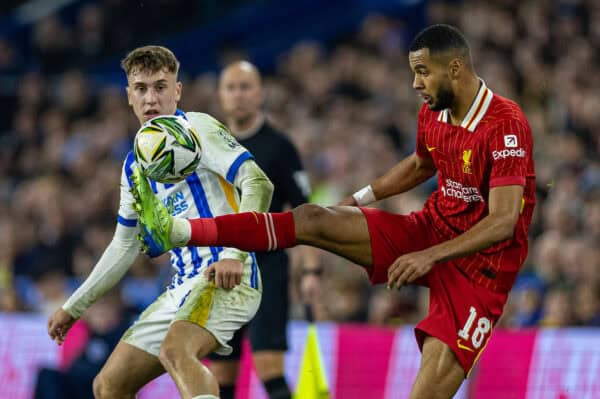Liverpool endured a tougher challenge than expected when they hosted West Ham on Monday night, with their 3-2 comeback victory defined, surprisingly, by corners.
The Reds were overwhelming favourites to turn David Moyes’ side over for the second time in a month, after the Scot’s defeatist comments following their loss to Man City.
But West Ham were dangerous in their own right at Anfield, with goals from Issa Diop and Pablo Fornels either side of half-time stunning Liverpool as they claimed a 2-1 lead.
Fortunately, the quality of the champions-elect shone through, with Mohamed Salah and Sadio Mane adding to Gini Wijnaldum‘s opener to secure victory and make it four wins to the title.
After the 1-0 loss to Atletico Madrid it was a welcome response, but came in a fashion that few would have predicted in the buildup.
Here is Liverpool’s comeback win in five key statistics.
Salah Levels Suarez
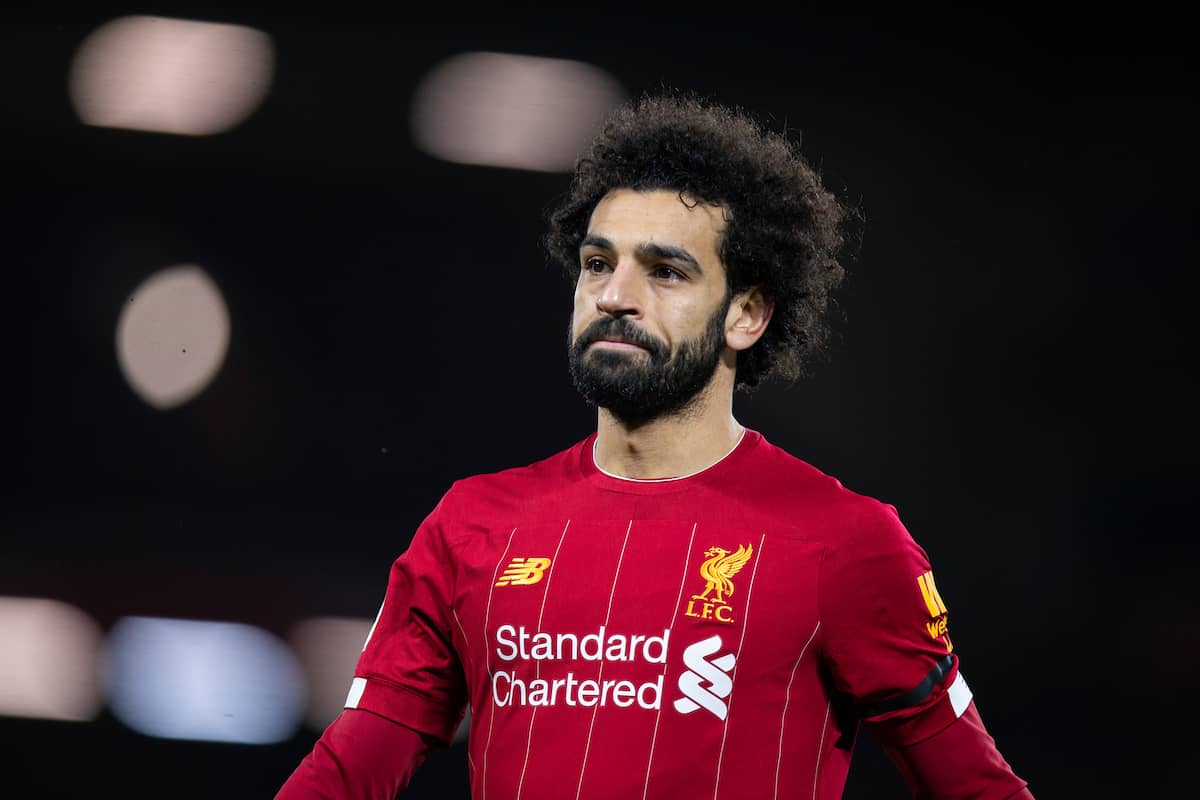
It was far from the most clinical performance from Salah, but it saw him score his 19th goal of the season as his low finish squeezed through the legs of Lukasz Fabianski.
One more, and the Egyptian will become the first Liverpool player since Michael Owen in 2002/03 to net 20 times in three consecutive campaigns for the club.
Owen is one of just three to score more times for the Reds in the Premier League than Salah, with the No. 11 drawing level with Luis Suarez’s 69-goal tally, having played 12 fewer games.
As revealed by club statistician Ged Rea, Salah also became the 15th player to score on all seven days of the week—a feat which was achieved by both Mane and Divock Origi earlier in the season.
Thirteen of Salah’s 15 goals in the league this season have come at Anfield, which according to Sky Sports is the most of any player and three more than the next-closest, Marcus Rashford (10).
Turning a Corner
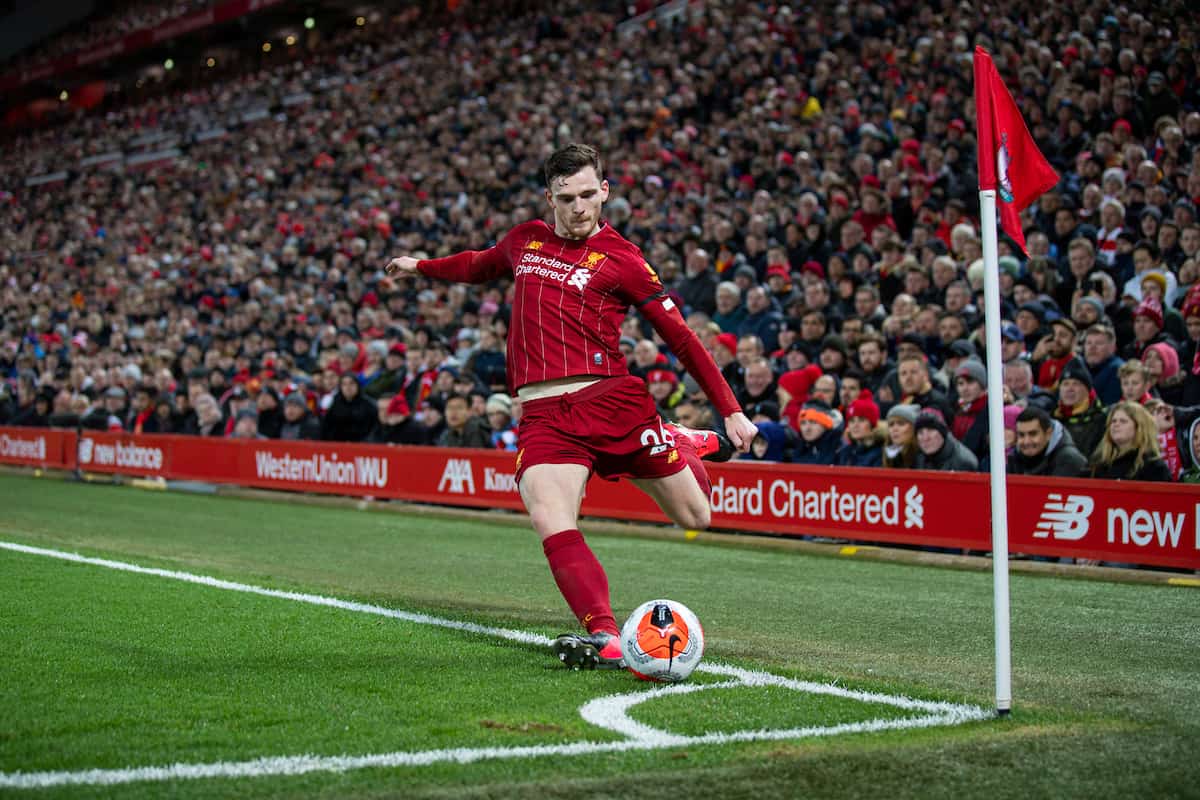
After confusion from a corner led to Saul Niguez’s winner in Madrid under a week before, it was disappointing to see Alisson beaten by Diop from another set-piece.
Before the game Moyes had conceded that, due to a spate of goals conceded from corners, West Ham may change their defensive approach—but ultimately it proved to be their biggest threat at the other end.
It was a plan that made Robert Snodgrass and Michail Antonio dangermen, and forced Liverpool to adapt their game to match this agricultural route to goal.
In Andrew Beasley’s column for the Liverpool Echo, he explains how “by the end of the match they had taken 16 in total, their most in a league game under Klopp.”
“Although they didn’t score from any of them, four of the Reds’ five shots in the six yard box came from set-piece situations, and all while the match was level,” he continued.
Trent Delivers Again
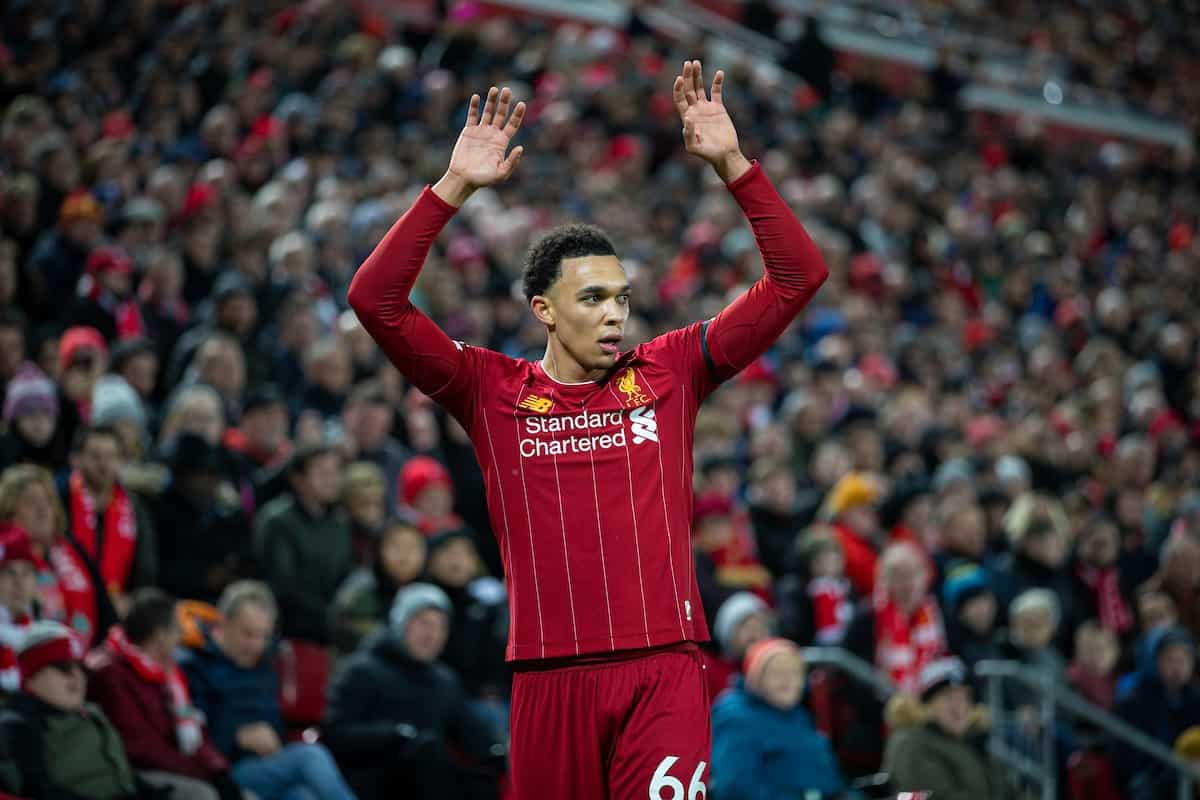
With Salah seemingly off corner duty after an experiment earlier in the season, Trent Alexander-Arnold and Andy Robertson were tasked with delivering these set-pieces from either side.
Both ended the game with assists—though none were from corners—which earned the pair particular distinction after the game.
As revealed by Opta, Robertson’s setup brought his tally in the Premier League to 27, which is the most of any defender since his debut in the English top flight in 2014.
Alexander-Arnold would not make his first outing in the league until over two years later, but he is now just two short of his fellow full-back’s record already, having notched his 24th and 25th assists on Monday night.
2 assists for @LFC's Trent Alexander-Arnold & 1 for Andy Robertson tonight
Most @premierleague assists since start of last season
2??4?? T ALEXANDER-ARNOLD
1??8?? A ROBERTSON
1??8?? K De Bruyne
1??7?? R Fraser pic.twitter.com/fMFhpGjPBW— Sky Sports Statto (@SkySportsStatto) February 24, 2020
Opta noted how Alexander-Arnold is the third-youngest player to reach the 25-assist mark in the Premier League era, behind only Cesc Fabregas and Wayne Rooney, and the youngest defender to do so.
Only 18 defenders in the same period of time have teed up more goals, with some—including Ashley Young (69) and Antonio Valencia (46)—having spent a considerable portion of their careers further up the pitch.
Ahead and Behind
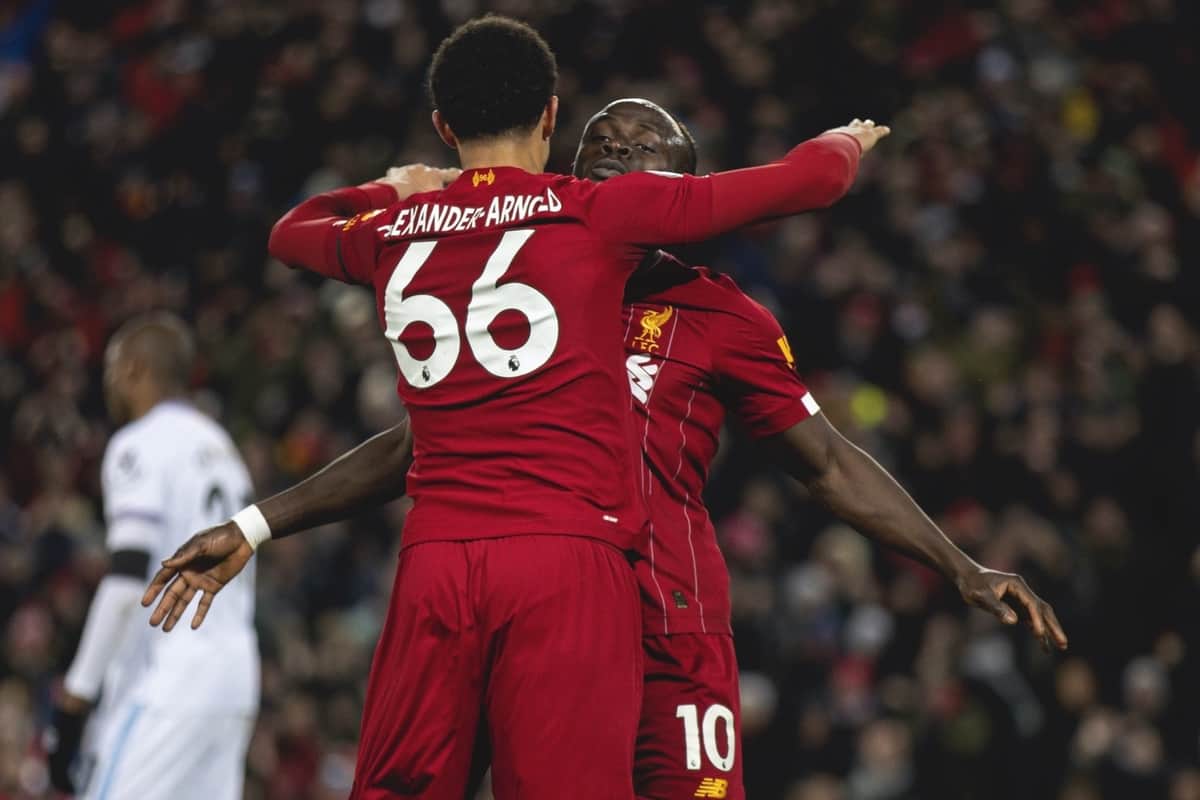
There was a palpable shock when Fornals’ goal put West Ham ahead at Anfield, with it becoming a rarity that Liverpool find themselves behind in the league.
Fortunately, they were able to turn it around quickly, with Salah’s equaliser coming just 14 minutes after the Spaniard’s improvised finish, and after another 13 they were ahead again.
A graphic provided by Opta has portrayed how few minutes the Reds have spent behind in the league this season—usefully, measured when the ball is in play—with this amounting to just eight percent of their time on the pitch:
53% – Liverpool have been in a winning position for 53% of the total time that the ball has been in play within Premier League matches this season; a higher proportion than any other side in the league. Dominance. pic.twitter.com/A3AWeLQH9G
— OptaJoe (@OptaJoe) February 25, 2020
This is at least eight percent less than any other side, the closest being Man City (16%), while Liverpool have been in front 53 percent of the time, which is 10 percent more than Pep Guardiola’s side (43%).
It shows how dominant the Reds have been this season, and how they can both defend a lead and fight back to overturn any deficits such as on Monday night.
Two All-Time Records
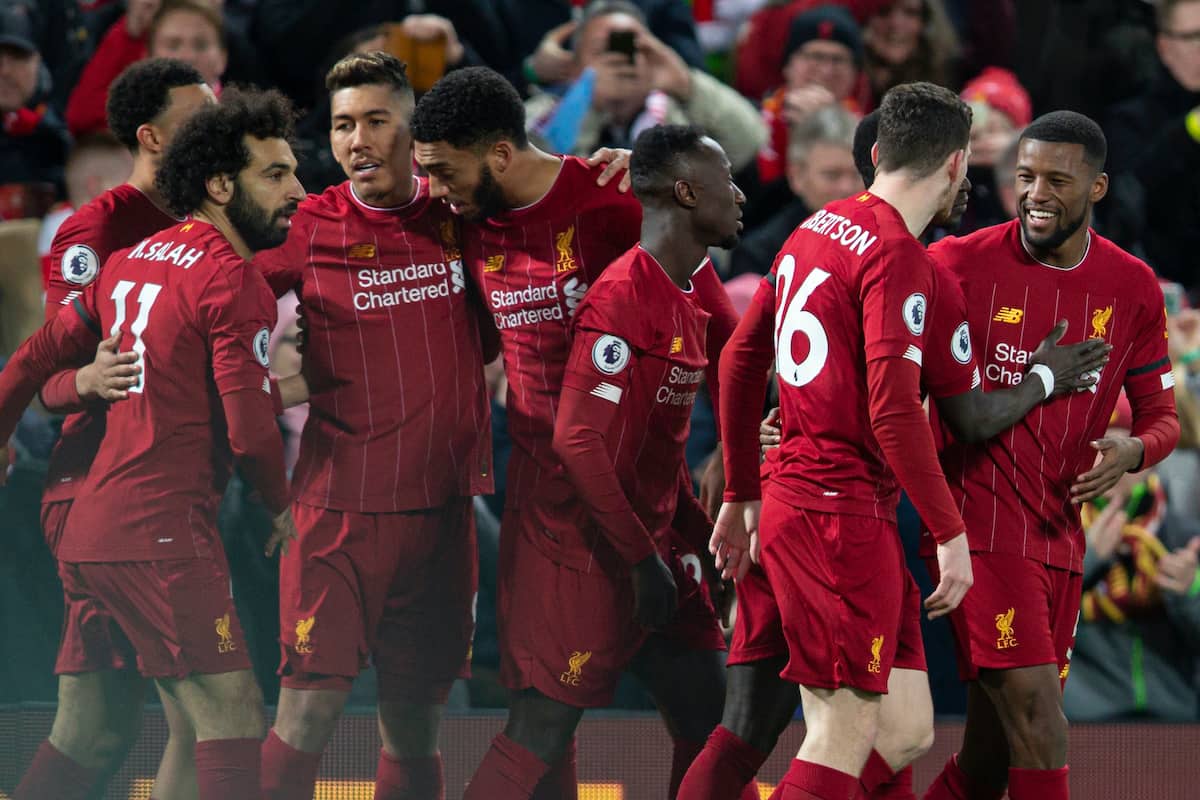
“I never thought it would be broken or equalled,” Klopp told reporters after the game.
“We said at the start that we wanted to create history and write our own stories and the players have clearly taken that seriously.
“You are right the numbers are unbelievable, we know that it is special. We did it and I cannot believe it happened to be honest.”
Klopp’s reflection on two particular records matched on Monday night saw him break character to an extent: the steely, determined approach faded slightly, with the magnitude of Liverpool’s achievements clear.
With victory over West Ham, the Reds equalled Man City‘s record 18-game winning streak in the Premier League, set between August and December 2017.
And they also levelled the club’s own all-time English top-flight record of 21 consecutive victories at home, achieved by Bill Shankly‘s side in 1972.
No wonder Klopp allowed himself to marvel at his side’s form: this is a best-ever season for Liverpool, and likely any club in history.
